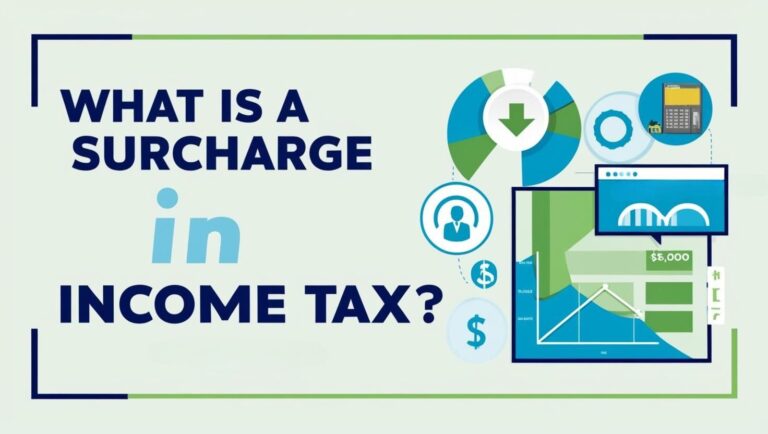Tax Planning for Salaried Employees in India for 2025
Tax planning is essential for salaried employees to legally minimize their tax liability and maximize their take-home salary. With the right strategies, you can optimize your tax savings while staying compliant with the latest tax laws. In this article, we will explore various ways to save tax for salaried employees in India in 2025 and provide practical guidance on how to save tax for salaried persons effectively.
How to Plan Taxes for Salaried Employees?
1. Understanding the Tax Slabs
The first step in tax planning is understanding the applicable tax slabs based on income and age. As per the financial year 2024-25, the tax rates are categorised into:
Old Tax Regime New Tax Regime u/s 115BAC
New Tax Regime
| Income Tax Slab | Income Tax Rate |
| Up to Rs. 3,00,000 | Nil |
| Rs. 3,00,001 – Rs. 7,00,000 | 5% above Rs. 3,00,000 |
| Rs. 7,00,001 – Rs. 10,00,000 | Rs. 20,000 + 10% above Rs. 7,00,000 |
| Rs. 10,00,001 – Rs. 12,00,000 | Rs. 50,000 + 15% above Rs. 10,00,000 |
| Rs. 12,00,001 – Rs. 15,00,000 | Rs. 80,000 + 20% above Rs. 12,00,000 |
| Rs. 15,00,001- Rs. above | Rs. 1,40,000 + 30% above Rs. 15,00,000 |
Note: Tax rebate up to Rs.25,000 is applicable for resident individuals if the total income does not exceed Rs 7,00,000 (not applicable for NRIs).
Old Tax Regime
| Income Tax Slab | Income Tax Rate |
| Up to Rs. 2,50,000 | Nil |
| Rs. 2,50,001 – Rs. 5,00,000 | 5% above Rs. 2,50,000 |
| Rs. 5,00,001 – Rs. 10,00,000 | Rs. 12,500 + 20% above Rs. 5,00,000 |
| Rs. 10,00,001 – Rs. above | Rs. 1,12,500 + 30% above Rs. 10,00,000 |
Note: Tax rebate up to Rs.12,500 is applicable for resident individuals if the total income does not exceed Rs 5,00,000 (not applicable for NRIs)
2. Best Ways to Save Tax for Salaried Employees in India
1. Maximizing Section 80C Deductions (₹1.5 Lakh Limit)
Section 80C of the Income Tax Act allows deductions up to Rs. 1,50,000. Common investment options under this section include:
- Employee Provident Fund (EPF)
- Public Provident Fund (PPF)
- National Savings Certificate (NSC)
- Equity-Linked Savings Schemes (ELSS)
- Life Insurance Premium for self, spouse, and children
- Home Loan Principal Repayment
Note: This deduction is only available under the old regime.
2. Health Insurance and Medical Expenses (Section 80D)
Health insurance premiums are eligible for deduction under Section 80D:
- Self, Spouse, and Children: Up to Rs. 25,000.
- Parents (Below 60 years): Additional Rs. 25,000.
- Parents (Above 60 years): Additional Rs. 50,000.
If you pay for preventive health check-ups, you can claim up to Rs. 5,000 within the overall limit.
Note: This deduction is only available under the old regime.
3. Claim House Rent Allowance (HRA)
You can claim HRA exemption under Section 10(13A) if you live in rented accommodation. The exemption amount is the least of the following:
- Actual HRA received.
- 50% of salary (40% for non-metros).
- Rent paid minus(-) 10% of salary.
For employees not receiving HRA, deductions under Section 80GG are available.
Note: This deduction is only available under the old regime.
4. Tax Benefits on Education Loans (Section 80E)
If you have an education loan, the interest paid is fully deductible under Section 80E. This deduction is available for up to 8 years or until the loan is repaid, whichever is earlier.
Note: This deduction is only available under the old regime.
5. Take Advantage of NPS Contributions (Section 80CCD)
The National Pension System (NPS) is an excellent tool for retirement planning. Contributions by the employee are eligible for:
- Section 80CCD(1): Deduction up to Rs. 1,50,000 (included in the 80C limit).
- Section 80CCD(1B): Additional deduction up to Rs. 50,000.
Note: This deduction is only available under the old regime.
7. Claiming Standard Deduction
Under the old tax regime, the standard deduction available to salaried individuals and pensioners is Rs. 50,000. However, the standard deduction has been increased to Rs. 75,000 under the new tax regime.
8. Claim LTA (Leave Travel Allowance)
Employees can claim an LTA exemption for travel expenses incurred during a vacation in India. The exemption covers travel by rail, air, or public transport and is available for two trips in a block of four calendar years.
Note: This deduction is only available under the old regime.
9. Reimbursements and Perquisites
Some allowances and perquisites offered by employers are tax-free or partially taxable, such as:
- Meal coupons or food allowances.
- Telephone and internet reimbursements.
- Uniform allowances.
Note: This deduction is only available under the old regime.
10. File Income Tax Returns (ITR) before Due Date
It is important to file the income tax returns before the due date as filing late would attract interest and penalties.
Additional Tax Saving Tips for Salaried Employees
- Gifts from employers up to ₹5,000 annually are tax-exempt.
- Reimbursement for mobile and internet bills (used for work) can be claimed.
- Use ELSS instead of FDs for better tax efficiency and higher returns.
- Opt for a salary restructuring to include more tax-free components.
Learn more about taxation in our The Indian Tax System: What You Need to Know Blog
Conclusion
Tax planning is crucial to maximize savings and reduce financial burden for salaried employees. By making smart investment choices and leveraging available exemptions, you can significantly lower your tax outgo. Whether you choose the old regime (for deductions) or the new regime (for lower tax rates), proper planning will help you achieve better financial stability.
🔹 Need Help with Tax Planning? Comment below or visit FinLecture.in for more expert guidance!







